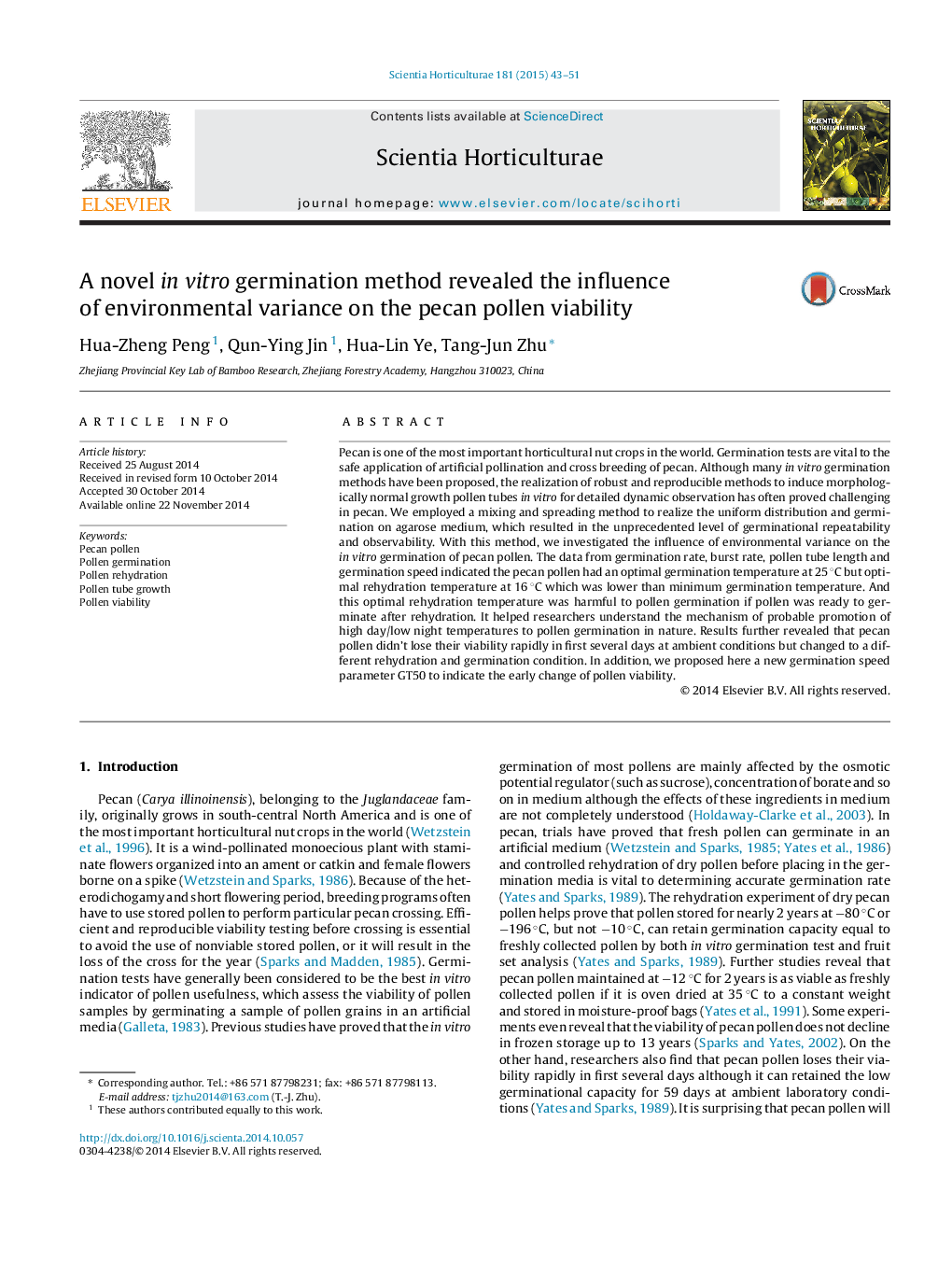| Article ID | Journal | Published Year | Pages | File Type |
|---|---|---|---|---|
| 6407073 | Scientia Horticulturae | 2015 | 9 Pages |
â¢We developed a novel method for efficient in vitro germination of pecan pollen.â¢Dynamic observation of morphologically normal growth of pecan pollen tube in vitro.â¢We verified the particular importance of rehydration temperature in pecan pollen.â¢Pecan pollen didn't lose their viability rapidly in early time at ambient conditions.â¢We proposed a new parameter GT50 to indicate the early change of pollen viability.
Pecan is one of the most important horticultural nut crops in the world. Germination tests are vital to the safe application of artificial pollination and cross breeding of pecan. Although many in vitro germination methods have been proposed, the realization of robust and reproducible methods to induce morphologically normal growth pollen tubes in vitro for detailed dynamic observation has often proved challenging in pecan. We employed a mixing and spreading method to realize the uniform distribution and germination on agarose medium, which resulted in the unprecedented level of germinational repeatability and observability. With this method, we investigated the influence of environmental variance on the in vitro germination of pecan pollen. The data from germination rate, burst rate, pollen tube length and germination speed indicated the pecan pollen had an optimal germination temperature at 25 °C but optimal rehydration temperature at 16 °C which was lower than minimum germination temperature. And this optimal rehydration temperature was harmful to pollen germination if pollen was ready to germinate after rehydration. It helped researchers understand the mechanism of probable promotion of high day/low night temperatures to pollen germination in nature. Results further revealed that pecan pollen didn't lose their viability rapidly in first several days at ambient conditions but changed to a different rehydration and germination condition. In addition, we proposed here a new germination speed parameter GT50 to indicate the early change of pollen viability.
